High blood pressure, also known as hypertension, often sets in subtly. Many people are unaware they have it until a routine check-up reveals the truth. By the time it’s diagnosed, your arteries may already be under pressure, and your heart could be working overtime.
The good news is that one of the most effective ways to reduce your blood pressure doesn’t come in the form of a pill. Instead, it starts right in your kitchen.
If you’re looking for ways to manage high blood pressure at home, this post will walk you through some simple food items that can make a noticeable difference. And no, you don’t need exotic ingredients or expensive supplements—just real, wholesome food.
Understanding High Blood Pressure: Why It Matters
Blood pressure refers to the force that your blood exerts on the walls of your arteries. Over time, consistently high blood pressure can cause damage to your heart and blood vessels. If left untreated, it can lead to serious health complications, such as:
- Heart attack
- Stroke
- Kidney damage
- Vision problems
Millions of people worldwide suffer from high blood pressure, often without symptoms. This is why it’s often referred to as a “silent killer.” However, the good news is that in many cases, high blood pressure can be reduced through dietary changes.
How Diet Influences Blood Pressure
Every food you consume—or avoid—can impact your blood pressure. Some foods help relax your blood vessels, reduce inflammation, and flush excess sodium from your body. On the other hand, some foods can have the opposite effect.
A heart-healthy diet designed to lower blood pressure has three significant benefits:
- Regulates key minerals: A proper diet increases potassium, magnesium, and calcium levels, all of which help relax blood vessels and reduce tension.
- Lowers sodium intake: Excessive salt retains water, which in turn raises both blood pressure and blood volume.
- Improves artery function: Antioxidants found in certain foods help protect arteries and make them less rigid.
Just think of food as your daily medicine—a quiet yet powerful tool that works behind the scenes.
The Power of the DASH Diet

The DASH diet, or Dietary Approaches to Stop Hypertension, is highly recommended by numerous nutritionists and doctors for its proven effectiveness in managing high blood pressure. This diet is designed to focus on foods that are naturally rich in essential nutrients and low in sodium, with an emphasis on:
- Vegetables and fruits
- Whole grains
- Lean protein
- Low-fat dairy
- Small portions of added sugar and saturated fat
- Reduced sodium
Research has shown that the DASH diet can significantly lower both systolic and diastolic blood pressure levels. The best part? You don’t have to follow a strict plan to reap the benefits. Even simple, gradual swaps—such as incorporating more fruits and vegetables while reducing processed foods—can lead to noticeable improvements.
The Science Behind Blood Pressure-Friendly Foods
Before diving into the specific foods that can help lower blood pressure, it’s important to understand the nutrients responsible for these benefits. The right combination of vitamins, minerals, and antioxidants can have a direct impact on your blood pressure levels.
Here’s a breakdown of the key nutrients that contribute to blood pressure regulation:
Top Nutrients That Help Lower Blood Pressure & Their Food Sources
| Nutrient | Function | Food Sources |
|---|---|---|
| Potassium | Balances sodium levels and relaxes vessels | Bananas, spinach, sweet potatoes, beans, avocados |
| Magnesium | Helps blood vessels relax | Pumpkin seeds, almonds, leafy greens, whole grains |
| Calcium | Supports vascular contraction and relaxation | Yogurt, milk, tofu, kale, sardines |
| Nitrates | Boost nitric oxide → relaxes arteries | Beets, arugula, lettuce, spinach |
| Omega-3 fats | Reduces inflammation and arterial stiffness | Fatty fish (salmon), flaxseeds, chia seeds |
| Antioxidants | Prevents oxidative stress in vessels | Berries, dark chocolate, citrus fruits, green tea |
By adding these nutrients to your diet, you’ll help create a more supportive environment for your heart and blood vessels, enabling them to function more efficiently. Now, let’s explore some of the foods that naturally provide these vital nutrients:
1. Leafy Greens: Nature’s Blood Pressure Balancer
Leafy vegetables like spinach, kale, arugula, collard greens, and Swiss chard are rich in potassium, magnesium, and dietary nitrates. Nitrates are particularly beneficial as they help expand blood vessels, which in turn reduces blood pressure.
Tip:
Eating a small salad daily can have a significant impact.
Add greens to smoothies, omelets, or stir-fries.
2. Berries: Tiny But Mighty
Berries such as blueberries, strawberries, and raspberries are packed with flavonoids—antioxidants that have been linked to better vascular function. Several studies show that regular consumption of berries can help lower blood pressure over time.
How to Include Them:
- Add them to yogurt or oatmeal.
- Keep them as a healthy snack in the freezer.
- Blend them into smoothies.
Berries satisfy sweet cravings without raising sodium or sugar levels, making them a heart-healthy treat.
3. Beets and Beetroot Juice
Beets are rich in dietary nitrates, which are converted into nitric oxide in the body. This helps dilate blood vessels and relieve pressure on the heart. Studies have shown that drinking beetroot juice can reduce systolic blood pressure hours after consumption.
Best Uses:
- Roast beets and add them to salads.
- Blend raw beets with apples and lemon for a refreshing drink.
- Consume fresh beetroot juice in the morning.
Start slowly if you’re not a fan of earthy flavors!
4. Whole Grains: More Than Just Fiber
Swapping refined carbs like white bread and sugary cereals for whole grains such as oats, quinoa, and brown rice can help lower both blood pressure and cholesterol levels. Oats, in particular, contain beta-glucan soluble fiber, which reduces arterial resistance.
Try This:
- Start your day with oatmeal.
- Replace white rice with brown rice or quinoa.
- Choose 100% whole wheat bread.
Making these simple swaps can contribute to long-term blood pressure regulation and reduced inflammation.
5. Fatty Fish: The Omega-3 Hero
Oily fish like salmon, mackerel, sardines, and tuna are packed with omega-3 fatty acids. These healthy fats help lower triglycerides, relax the cardiovascular system, and reduce the stiffness of heart arteries. They also assist in maintaining a regular heartbeat.
If you prefer plant-based options, chia seeds, flaxseeds, and walnuts also contain omega-3s, although the body’s conversion of these is less effective than that from fish.
Cooking Tip: Avoid frying fish, as it can cause the loss of heart-healthy properties.
6. Garlic: Tiny Clove, Big Impact
Garlic contains a sulfur compound known as allicin, which helps widen blood vessels and reduce blood pressure. Numerous clinical studies have shown that garlic supplementation can lower both systolic and diastolic blood pressure, especially in individuals with hypertension.
How to Consume:
- Chop fresh garlic and let it rest for 5-10 minutes before cooking to activate allicin.
- Add it to soups, sautés, or dressings.
- If raw garlic is too strong, consider aged garlic supplements.
Not only is garlic heart-healthy, but it also boosts immunity!
7. Low-Fat Yogurt and Milk
Dairy products such as yogurt and milk are rich in calcium and peptides, which can play a crucial role in managing blood pressure. A 2021 study published in the International Dairy Journal showed that frequent consumption of yogurt is linked to reduced systolic blood pressure, particularly in older adults.
How to Include Dairy:
- Add yogurt to your breakfast with fruits and seeds.
- Use yogurt as a healthy alternative to mayonnaise or cream in recipes.
- Blend it into smoothies to increase your calcium intake.
8. Bananas and Potassium-Rich Fruits
Bananas are often considered the poster fruit for potassium, with one banana containing approximately 400 mg of this vital mineral. Potassium helps counterbalance the effects of sodium and eases tension in blood vessels. Other fruits rich in potassium include:
- Oranges
- Apricots
- Cantaloupe
- Kiwi
- Avocados
Quick Tip: Try substituting one meal a day with a fruit bowl or smoothie made with yogurt, banana, and spinach for a potassium-packed morning boost.
9. Seeds and Nuts: Small in Size, Big in Benefits
Pumpkin seeds are packed with magnesium, potassium, and zinc—essential nutrients for maintaining normal blood pressure. Research has shown that magnesium supplementation, including dietary sources, can significantly lower both systolic and diastolic blood pressure. Other heart-healthy nuts like walnuts, almonds, and pistachios are also great for improving artery flexibility and heart health.
Snack Ideas:
A handful of seeds or nuts daily is sufficient.
Mix seeds into oatmeal or salads.
Enjoy a small bowl of unsalted almonds as a mid-day snack.
10. Dark Chocolate (Yes, Really)
Good news for chocolate lovers! A small square of dark chocolate (70% cocoa or higher) can actually help reduce blood pressure. The flavonoids in dark chocolate help relax blood vessels and improve blood flow.
Remember:
Avoid milk chocolate or those with high sugar or fat content, as they can have the opposite effect.
Stick to a small square a day—no more!
11. Herbs and Spices: Flavor Without the Salt
Salt is one of the biggest contributors to high blood pressure, but reducing it doesn’t mean sacrificing flavor. Several herbs and spices can enhance your meals without the need for added salt. Some excellent choices include:
- Basil
- Cinnamon
- Turmeric
- Garlic powder
- Ginger
- Parsley
Pro Tip: Create a homemade spice mix to stir into veggies, meats, or grains to elevate flavor without relying on salt.
12. Foods to Avoid: What to Minimize or Replace
While we focus on what to eat, it’s equally important to know which foods to minimize or avoid to prevent elevated blood pressure. These include:
- Processed meats like bacon and sausages
- Canned soups and vegetables that often contain added salt
- Fried foods and fast food
- Sugary sodas and energy drinks
- Highly processed snack foods like chips and crackers
Smart Tip: Choose natural, organic, and whole foods as much as possible. Make it a habit to read food labels—especially the sodium content.
7-Day Blood Pressure-Friendly Meal Plan
If you’re not sure how to bring all these recommendations into a full day’s diet, don’t worry. We’ve created a simple, realistic meal plan that you can start using today.
7-Day Meal Plan to Lower Blood Pressure
| Day | Breakfast | Lunch | Dinner | Snack |
|---|---|---|---|---|
| Mon | Oatmeal with berries & flaxseeds | Grilled chicken salad + olive oil | Baked salmon + quinoa + steamed greens | Banana + handful of almonds |
| Tue | Greek yogurt + walnuts + sliced orange | Lentil soup + whole grain bread | Stir-fried tofu with broccoli & garlic | Cucumber slices + hummus |
| Wed | Green smoothie (spinach, banana, avocado) | Turkey sandwich on whole wheat + apple | Grilled mackerel + brown rice | Pumpkin seeds + dark chocolate square |
| Thu | Scrambled eggs + sautéed kale | Quinoa bowl with veggies + tahini | Veggie curry with sweet potatoes | Handful of pistachios |
| Fri | Whole grain toast + almond butter + banana | Chickpea salad + beet slices | Grilled chicken + roasted Brussels | Yogurt + berries |
| Sat | Smoothie bowl with oats, berries, chia | Black bean wrap + avocado | Baked cod + spinach + mashed potatoes | Orange slices + mixed nuts |
| Sun | Omelette with spinach & tomatoes | Baked sweet potato + broccoli | Lentil stew + wild rice | Greek yogurt + cinnamon + flaxseeds |
A blood pressure-friendly eating plan balances variety and nutritional intent. It focuses on essential nutrients like potassium, magnesium, fiber, and healthy fats while reducing the need for excess sodium. This approach is not only effective but also sustainable, helping you manage your blood pressure without feeling deprived.
14. Grocery Checklist for BP Management
Knowing what to buy when you’re at the store can help you stick to your health goals. Planning ahead ensures you pick foods that are beneficial for your blood pressure. Here’s a quick grocery list to keep handy—whether saved on your phone or printed out and stuck to your fridge:
Produce
- Spinach, kale, arugula
- Beets
- Broccoli
- Berries, oranges, bananas
- Avocados
- Garlic, onions
Whole Grains
- Oats
- Brown rice
- Unrefined bread
- Quinoa
Proteins
- Salmon, mackerel, tuna
- Tofu
- Lentils, chickpeas
- Eggs
Dairy & Alternatives
- Low-fat yogurt
- Milk or calcium-fortified plant-based milk
Pantry Essentials
- Olive oil
- Pumpkin, almond, walnut seeds
- Flaxseed, chia seeds
- Dark chocolate (70% cocoa and higher)
- Dry herbs and spices (cinnamon, basil, turmeric)
Stocking up on these foods makes it easier to eat well and maintain a heart-healthy diet.
When to Talk to Your Doctor
While food plays a significant role in blood pressure management, it’s essential to know when to seek professional advice. If you experience any of the following symptoms, it’s important to consult with a doctor:
- Headaches
- Chest tightness
- Exhaustion or dizziness
- Vision changes
In some cases, individuals may require medication even if they follow a heart-healthy diet. Never stop or begin any blood pressure medication without consulting your healthcare provider.
Conclusion
What you put on your plate can either contribute to healing or harm your body. By filling your meals with fresh, colorful, and natural foods—like leafy greens, fruits, seeds, fish, and herbs—you’re not just nourishing your body but actively working to heal it at its core.
The best part? Achieving these health benefits doesn’t require fancy ingredients or major sacrifices. It simply takes consistency, curiosity, and a little preparation. Whether you’re newly diagnosed or striving to stay ahead of the game, nature has already provided us with everything we need to manage our health.
Next time you’re cooking, ask yourself:
Does this food benefit my heart or harm it?
Choose wisely. After all, your heart is always listening.
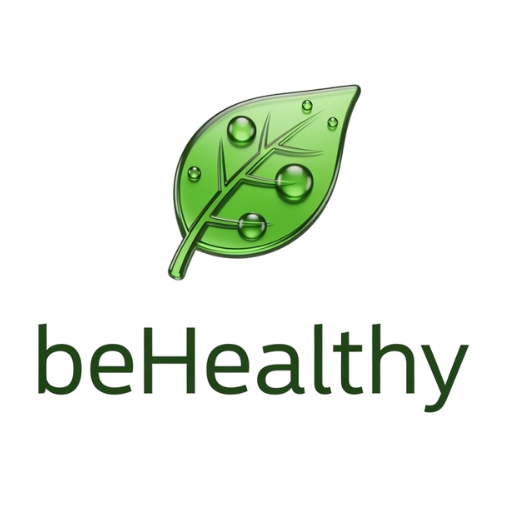
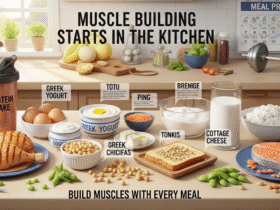

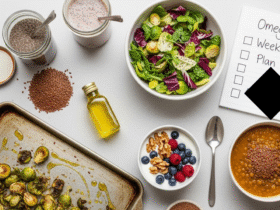

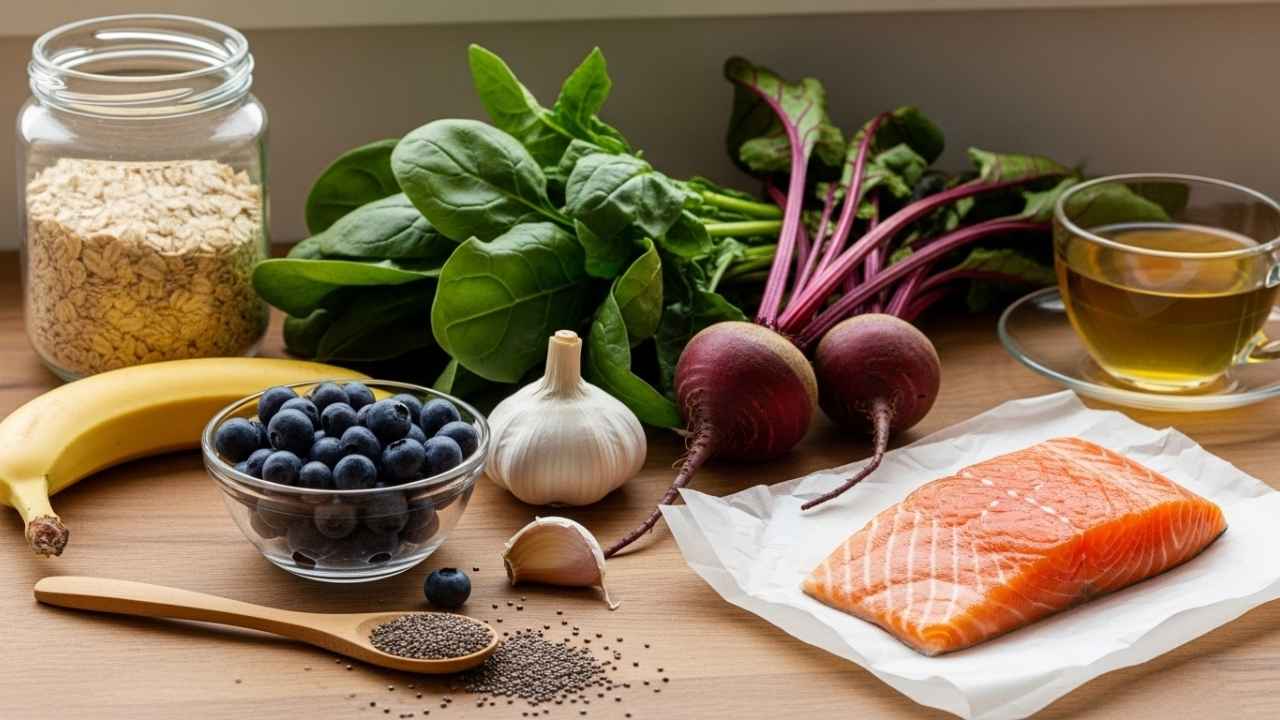


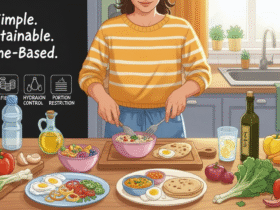




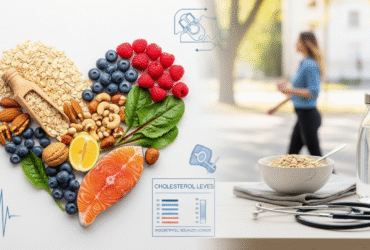
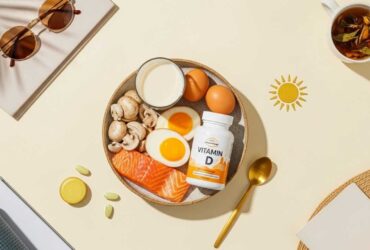
Leave a Reply